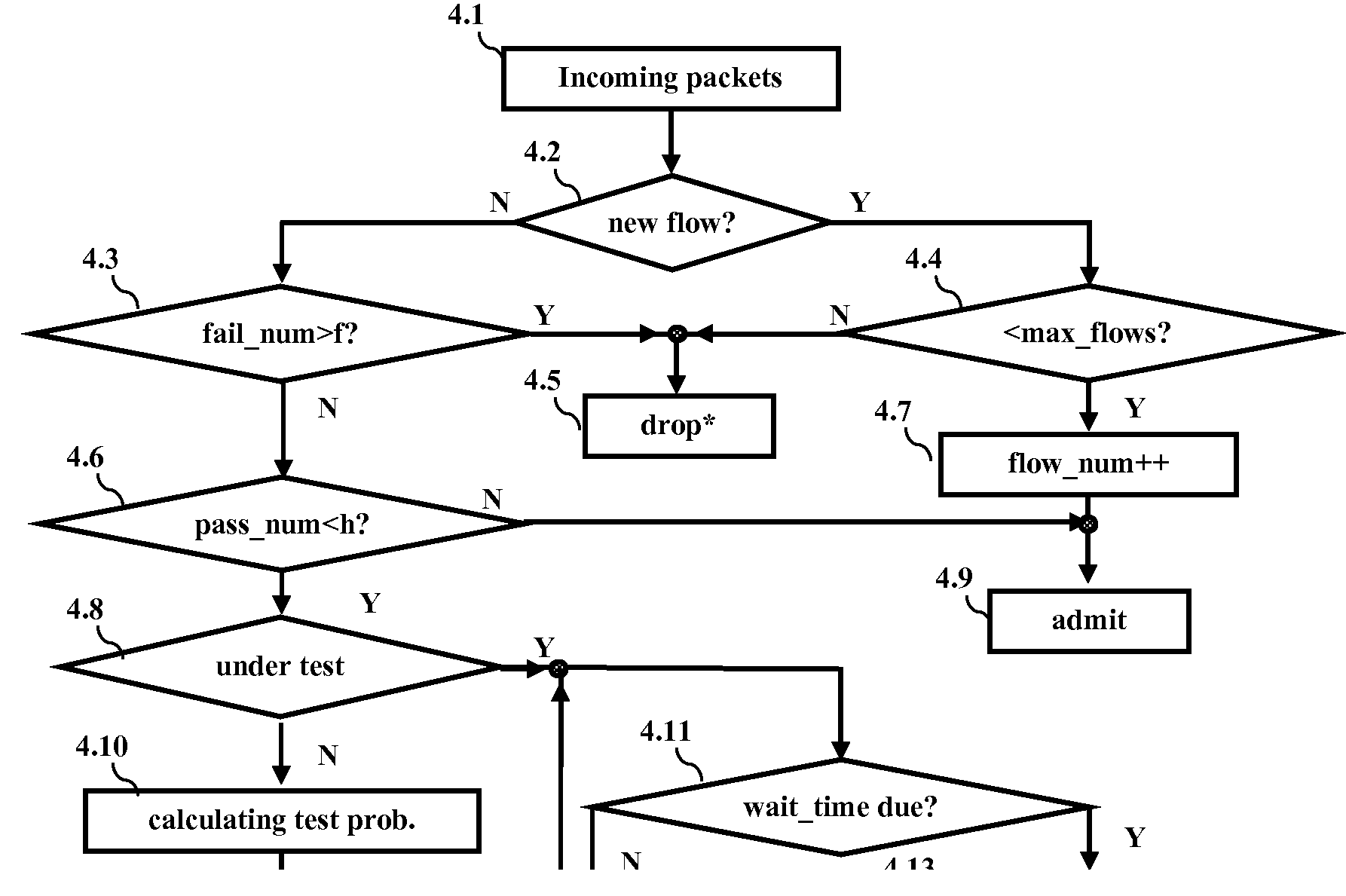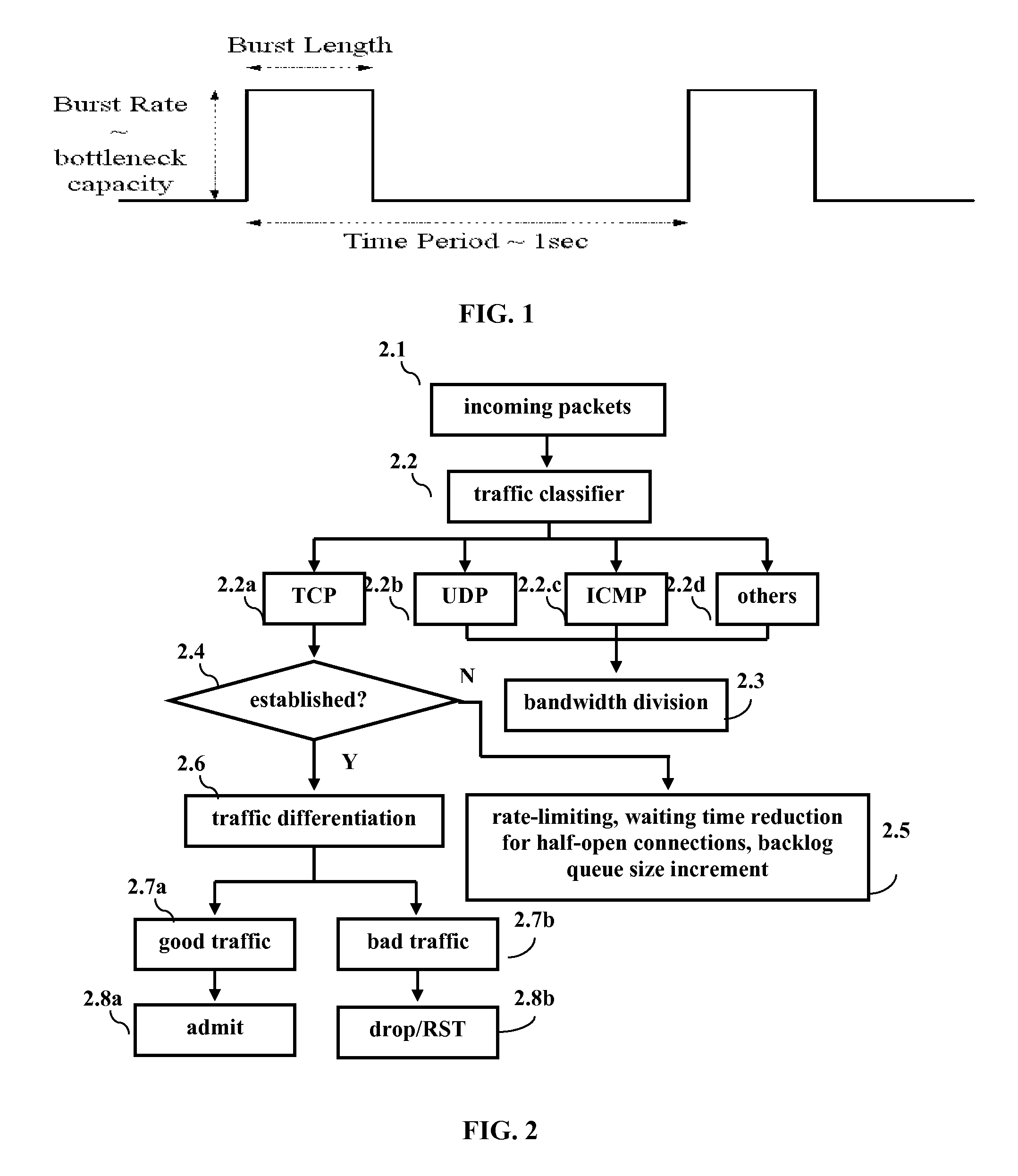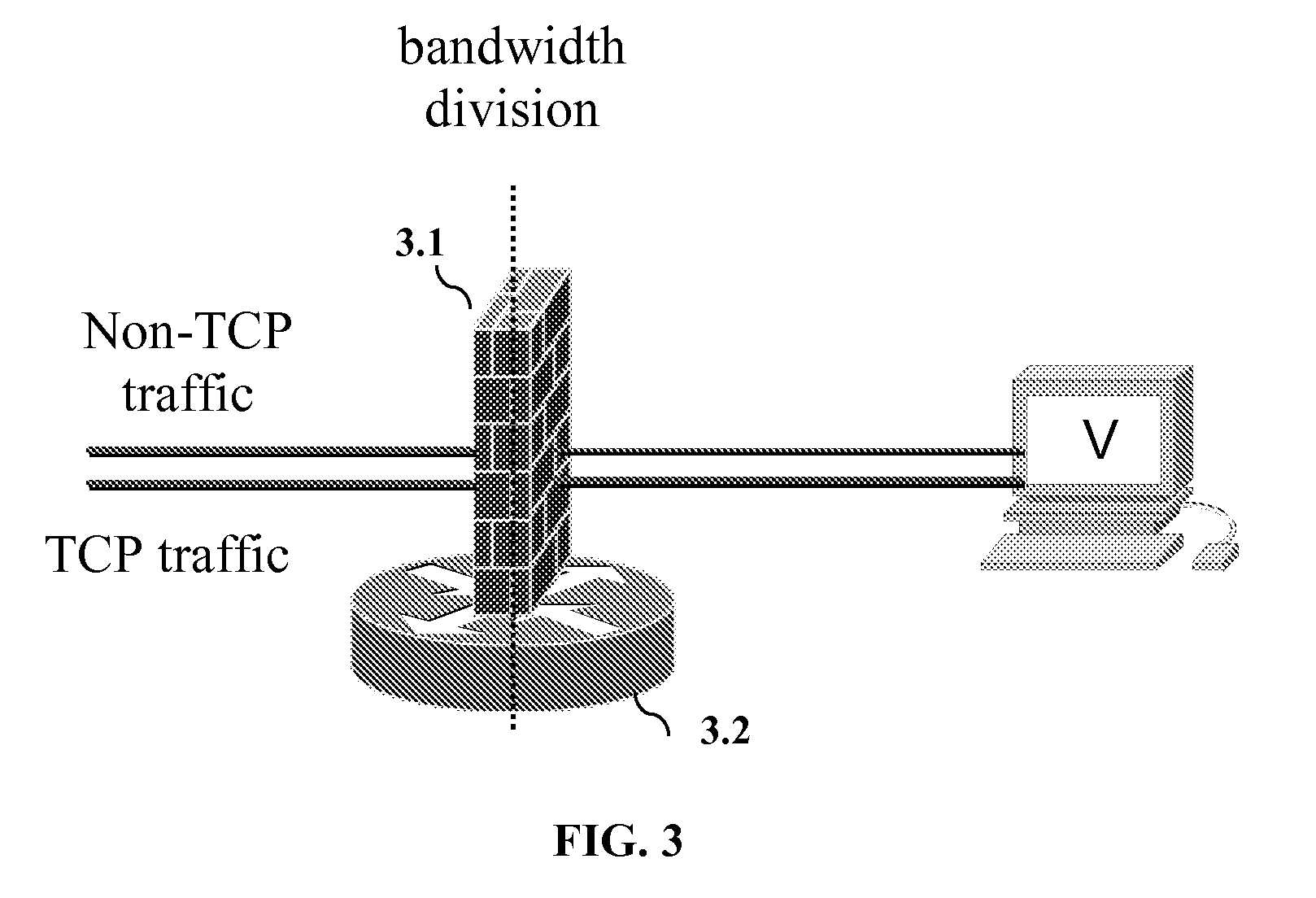BEHAVIOR-BASED TRAFFIC DIFFERENTIATION (BTD) FOR DEFENDING AGAINST DISTRIBUTED DENIAL OF SERVICE (DDoS) ATTACKS
- Summary
- Abstract
- Description
- Claims
- Application Information
AI Technical Summary
Benefits of technology
Problems solved by technology
Method used
Image
Examples
Embodiment Construction
[0020]Embodiments of BTD attempt to isolate attack traffic and contain as many DDoS attack schemes as possible. DDoS attacks are a resource management problem, and thus embodiments adopt a QoS means to combat them. Embodiments of BTD use an integrated scheme to efficiently and effectively contain a variety of DDoS attack schemes rather than just one or two attack schemes, as in the background art. Embodiments of BTD can differentiate between malicious attack traffic and normal traffic, and can punish the malicious attack traffic. Embodiments of BTD are comprised of at least 2 components. The first component classifies different types of traffic based on the protocols used and limits their rates accordingly with bandwidth allocation. This method serves to isolate UDP, ICMP and other traffic from TCP, and is helpful in mitigating some flood-attacks based on UDP and ICMP via limiting bandwidth allocation to non-TCP traffic.
[0021]TCP is the dominant traffic on the Internet and most DDoS...
PUM
 Login to View More
Login to View More Abstract
Description
Claims
Application Information
 Login to View More
Login to View More - R&D
- Intellectual Property
- Life Sciences
- Materials
- Tech Scout
- Unparalleled Data Quality
- Higher Quality Content
- 60% Fewer Hallucinations
Browse by: Latest US Patents, China's latest patents, Technical Efficacy Thesaurus, Application Domain, Technology Topic, Popular Technical Reports.
© 2025 PatSnap. All rights reserved.Legal|Privacy policy|Modern Slavery Act Transparency Statement|Sitemap|About US| Contact US: help@patsnap.com



